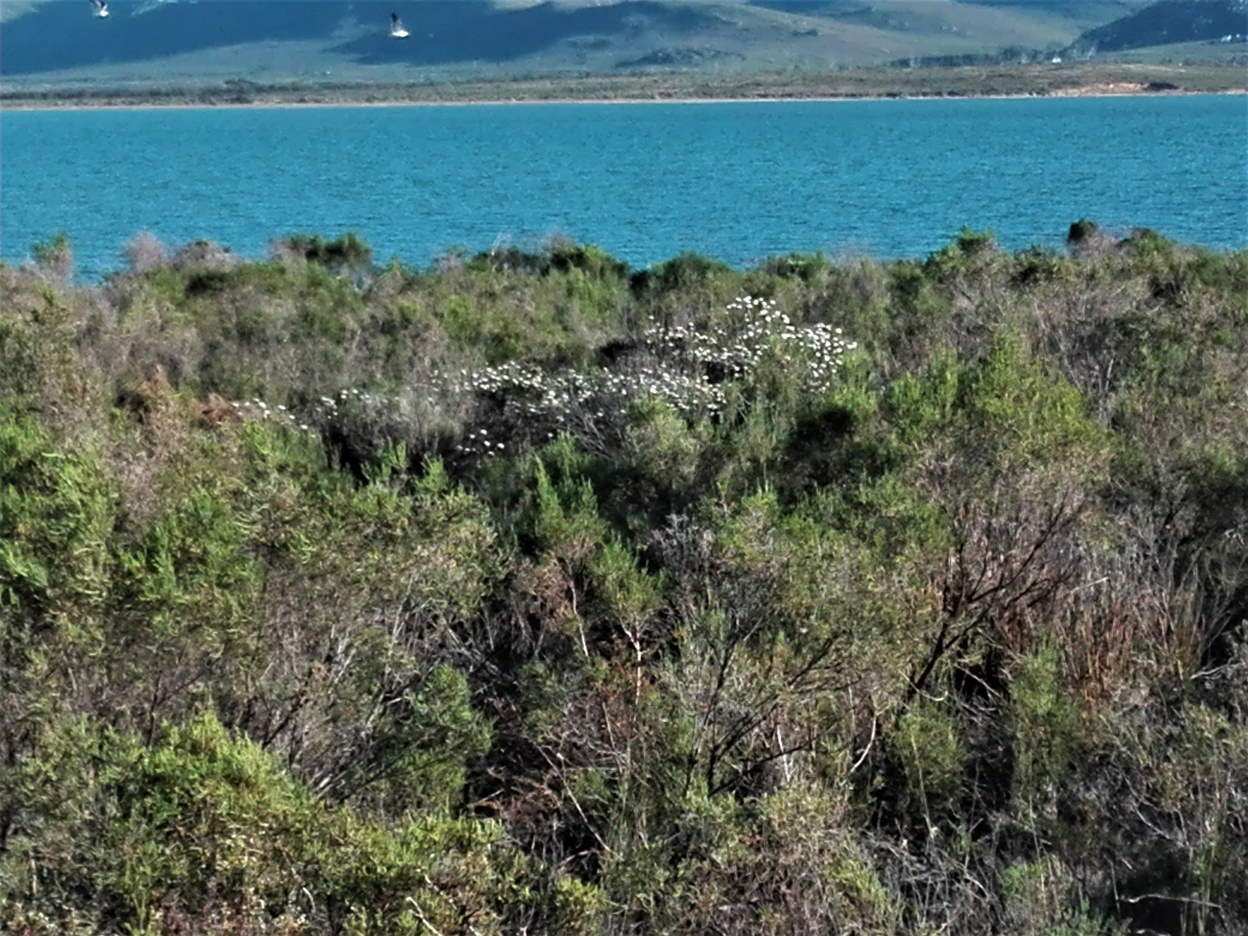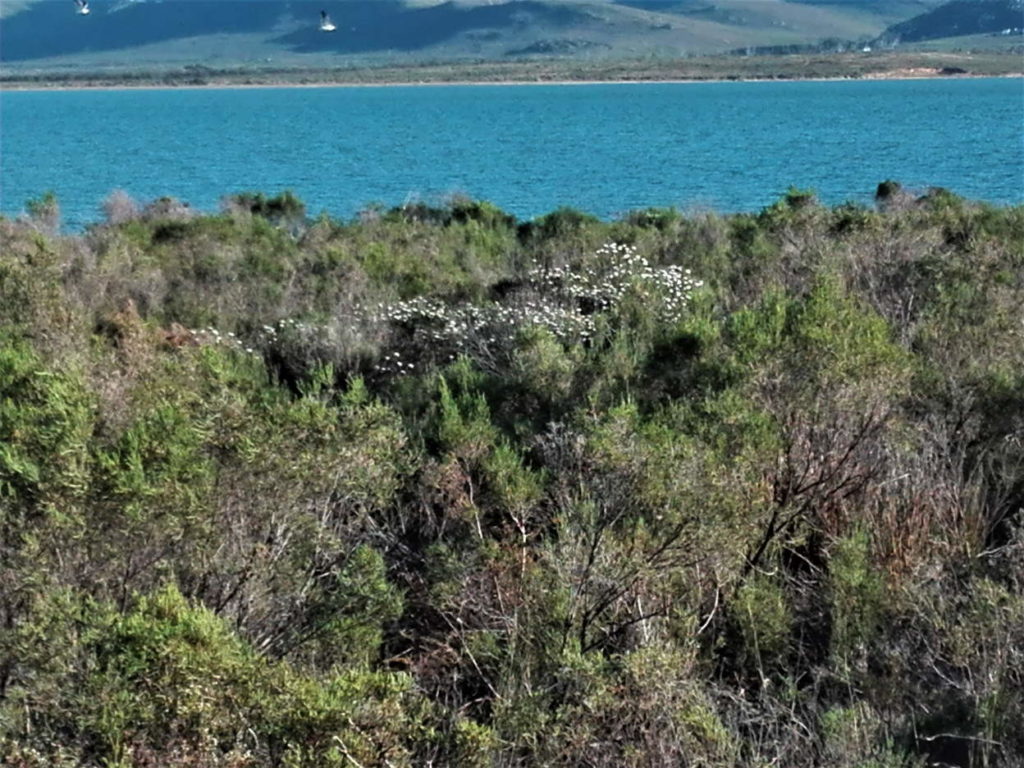
The clearing of alien plants in Fisherhaven was part of the Botfriends Challenge with the updated data presented in a previous post. Areas were rated in terms of their level of infestation and previous history of clearing. Costs varied from R40/ha to well over R10 000/ha.
Clearing techniques were designed from a start with local knowledge trying to keep the costs as low as possible as there were limited funds available and public donations were been spent. Observations were made of existing methods and their effectiveness. A start was made on public land areas previously cleared. This was then expanded to the listed green areas of Fisherhaven (as shown in the map of Fisherhaven clearing in the post Botfriends Challenge), excluding some areas which had been severely damaged by previous attempts. The national environmental laws of South Africa do have broad clearing techniques.

The areas of concern for the clearing of alien plants in Fisherhaven consist of mostly Port Jackson (PJ) and Australian Myrtle. Some Rooikraans, Hakea, pine, gum and Bottlebrush occurs in small numbers. Young plants that can be removed easily should be uprooted. This varies with how dry the soil is. Seedlings up to about 50 cm can be uprooted in damp soils. If the plant cannot be uprooted, then it should be cut off below ground level, otherwise it regrows with multiple stems making the problem even worse. This applies even to young Rooikraans and pine. Slashing or mowing of especially PJ and Myrtle is ineffective making the problem worse with multiple stems growing from an existing root system much faster then seedling growth. The Challenge data also showed that the direct cost per unit area can be increased by three times (Updated data). Repeatedly mowed areas have large gnarled stumps that are difficult to deal with even with poisoning of the stumps because of many multiple buds and small stems, easy to miss.
Soil disturbance is a critical factor and has to be kept to a minimum, even mole hills generate multiple seedling growth as do porcupines digging for bulbs.
Larger plants were cut off at the base and poison used on the stumps. The spaying of poison is easier and quick. Unfortunately, this is difficult to do without spaying surrounding plants, which causes a patch to develop which is a great seedbed for multiple PJ seedling growth. The data observed shows that indigenous species seem to be more prone to poisons than the invasive species. There are numerous examples of this poor technique all over Fisherhaven. Therefore, poisoning was done by painting the stumps which was found to be 100% effective.
Most of the uprooted material and even the cut down material was not removed from site. The cost of removal would have doubled the costs of clearing. An attempt was made to leave the material on bare patches close by but to flatten the material on the ground to reduce fire risk. PJ are legumes with a high nitrogen content and rot down within months if in close content with the soil. All the nutrients in these plants returns to the soil which in any case have a very low nutrient status anyway. The material also protects the sand from blowing and increases the germination of seedlings by protecting the soil and providing a better seedbed. Port Jackson chips make a very good mulch and provides a good seedbed for seedling germination. The rehabilitation of blowing sand and other bare patches within an area can be speeded up greatly by mulching. The high nitrogen PJ mulch does not rob the soil of nitrogen for decomposition purposes and has been shown within this area to much more effective in providing a good seedbed.
Where excessive material was chopped down this was removed or put into windrows to decompose, occupying less than half the space. In windrows this material decomposes faster.
In addition to the Challenge valuable information was obtained from a few private clearing jobs on private property. These had different histories of management from the public spaces. There were also clearing operations done directly by the OSM or contracted out to private people. These sites were not only in Fisherhaven but included areas within the rest of Ward 8 and some further afield than that. Most of these sites had been assessed before clearing of what existed there. The methods of clearing were closely observed and recovery or lack of recovery were observed and partly documented. Some contractors were paid to little to be able to do the job adequately even though they knew how to do so. Many of these bad clearing jobs were reported to the authorities. Incorrect problem identification and thus incorrect procedures were done. This usually resulted in making the problem worse than it had been before. For example the school site Erf 634 was been considered to be added to the Challenge. Rated as a B area very similar to Erf 752 which was cleared by the Challenge. This was then mowed by the OSM. Within two years it had regrowth of Port Jacksons to the same height and 4 times as many stems. Then rated as B1, with at least 3 times the cost to clear. Had it been done using the correct techniques the cost would have come down to less then half the initial cost.
A second example was reported ‘Is this a step in the right direction‘ where actual costings were made in terms of labour days. The actual costs on the area cleared by the Challenge reduced significantly from the second year and should proceed at only a maintenance rate, about 3%. The adjoining area the costs are increasing by more than 40% each year. When this was reported it was covered up and eventually buried. Nevertheless, it confirmed and supplied valuable data for the Challenge approach to clearing alien plants in Fisherhaven.
Plant competition dynamics is very important especially in the Fynbos area. Well manged Fynbos has a great variety of plant species, each occupying their own little knitch and adapted to growing together. Species mixes can vary over short distances. There are about 400 different species within the Fisherhaven area and some new ones have only recently been discovered. The main problem with the invasive species is that they dominate the environment reducing species diversity to as little as 5. The main objective of clearing is remove the invasive species and tip the balance in favour of the indigenous species. In some areas the poor past management has eliminated many of the indigenous species. In time these will return providing more competition to the invasive species. The timing of invasive species removal has a huge influence on the cost of removal as has been shown by the data gathered from the Challenge clearing program. Even the time of year of clearing is critical to improving the ability of the indigenous vegetation to be better able to compete with the alien species.
Of note in the clearing of alien plants in Fisherhaven Challenge was the faster recovery in some places than was expected. We were definitely doing something right and swayed the balance more in favour of indigenous vegetation than was expected. Maintenance of the gains made by the Challenge in terms of both costing, especially in the long run and techniques established need to be maintained.
A factor that has not really been researched is the incidence of fire on previously infested areas while a good seedbank of aliens still exists in the soil. Indigenous well established Fynbos is well adapted to fire and should not be allowed to burn too often, as has been well established from research. The removal of recently established Fynbos by fire removes the competitive advantage established by timely and correct techniques. Aliens such Port Jackson tend to germinate from an existing seedbank faster than indigenous species. The indigenous species seem to hold back for a while before germinating. The rapid removal of these seedlings of the aliens is usually followed by quicker germination of indigenous species. Timing of clearing becomes even more critical to establish the competitiveness of indigenous species to recover a previously invaded area. Observations of recently burnt areas seems to confirm this although actual data was not gathered. This is also confirmed in some of the literature where unexpected fires have burnt through research areas.
Blanket spraying of herbicide affects the indigenous vegetation more than the alien species, numerous examples of this exist within Fisherhaven. The poisons used persist for years, if not for ever. Some poison was used in this study, but was painted on to stumps too big to uproot. This uses much less poison, is usually only a once off and is very targeted. Much evidence was gathered of any soil disturbance causing blankets of Port Jacksons germinating. The use of mechanical equipment such as a digger loader, damages indigenous vegetation and results in a carpet of Port Jackson germinating, leading to full cover within 2 years. Even mole and porcupine soil disturbance results in local high germination of aliens especially Port Jackson.
Another point of note to come out of this study is how Port Jackson growth of seedlings and initial growth can be used to significantly reduce the PJ seedbank. If an area is disturbed, eliminating the indigenous competition the PJ seeds rapidly germinate with as many as 100 seedlings/metre squared. If left to grow to about 40cm, only 4-5 plants remain. They have outcompeted themselves. At this height they can be easily removed by hand pulling and take less time to do than trying to remove the 100 initial seedlings. Timing again becomes critical to get it done they get to well established and begin to outcompete the indigenous vegetation. It is a delicate balance which must be maintained.
Much of this material on clearing of alien plants in Fisherhaven has been mentioned in Botfriends and Greenheart Facebook pages as well as in Newsletters.

Recent Comments